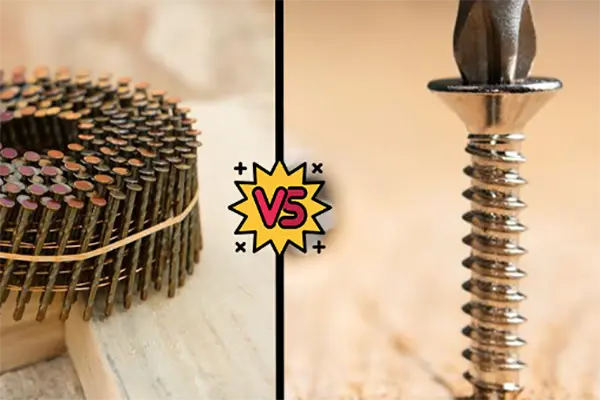In the world of construction engineering, the choice of fasteners has a decisive impact on the stability, durability and final construction quality of the entire structure. Screws, nails and staples are the three main types of fasteners, each with unique properties and applicable scenarios. This article will deeply explore the technical characteristics, applicability and technical considerations of these fasteners in different construction projects to help you make more scientific and reasonable choices.
Screws: strong fixing power and high adaptability
Screws are favored by engineers and construction workers for their excellent holding power and wide range of applications. Its precision thread design ensures maximum contact area with the connecting material, providing superior grip. Screws are particularly suitable for structural connections that need to withstand heavy loads or frequent activities, such as the fixation of steel structures, the foundation installation of large equipment, and construction in earthquake-prone areas.
Technical considerations:
Material selection: The material of the screw should be selected according to the nature of the connection material and corrosion resistance requirements. For example, stainless steel screws are suitable for humid environments.
Thread type: Different types of threads (such as self-tapping or machine threads) are suitable for different materials and loading conditions.
Pre-tightening force: Appropriate pre-tightening force can ensure the reliability of the connection. Too high or too low pre-tightening force may cause connection failure.
Nails: the cost-effective solution for quick connections
Nails are widely used in construction projects for their quick installation and cost-effectiveness, especially in framing and sheathing projects that require a large number of connections. Nails are quick to install and require relatively low operator skills, making them ideal for increasing construction efficiency.
Technical considerations:
Nail type: Choose the right nails according to the type and thickness of the wood, such as round nails are suitable for soft wood, while square nails are better for hardwood.
Pull-out resistance: Take into account the expansion and contraction of wood, choose nails with sufficient pull-out resistance to prevent loosening of the joint.
Selection of pneumatic tools: Using a high-quality pneumatic nail gun can improve the accuracy and efficiency of nail installation.
Staples: the precise and efficient fastening option
Staples provide fast, precise and neat joining solutions in certain construction applications. They are commonly used for the installation of roof coverings, insulation and cladding materials, particularly where damage to the materials needs to be avoided or a neat appearance is desired.
Technical considerations:
Installation accuracy: The installation of staples requires precise positioning and operation to ensure the uniformity and stability of the connection.
Material Compatibility: Staple materials should be compatible with the materials being joined to avoid chemical reactions or damage.
Penetration Power: Choose staples with appropriate penetration power to ensure they can effectively penetrate the underlying material without causing damage.
Conclusion
In a construction project, choosing the right fasteners is a technical decision that involves many considerations. Screws, nails, and staples each have their own advantages and limitations, which need to be considered based on the specific needs of the project, material properties, construction environment, and budget. By in-depth understanding of the technical characteristics and application requirements of these fasteners, you can select the most appropriate fasteners for each project, ensuring smooth construction and long-term stability of the building. Correct fastener selection can not only improve the quality of the project, but also extend the service life of the building and facilitate future maintenance and renovation.
Post time: 4月-17-2024

